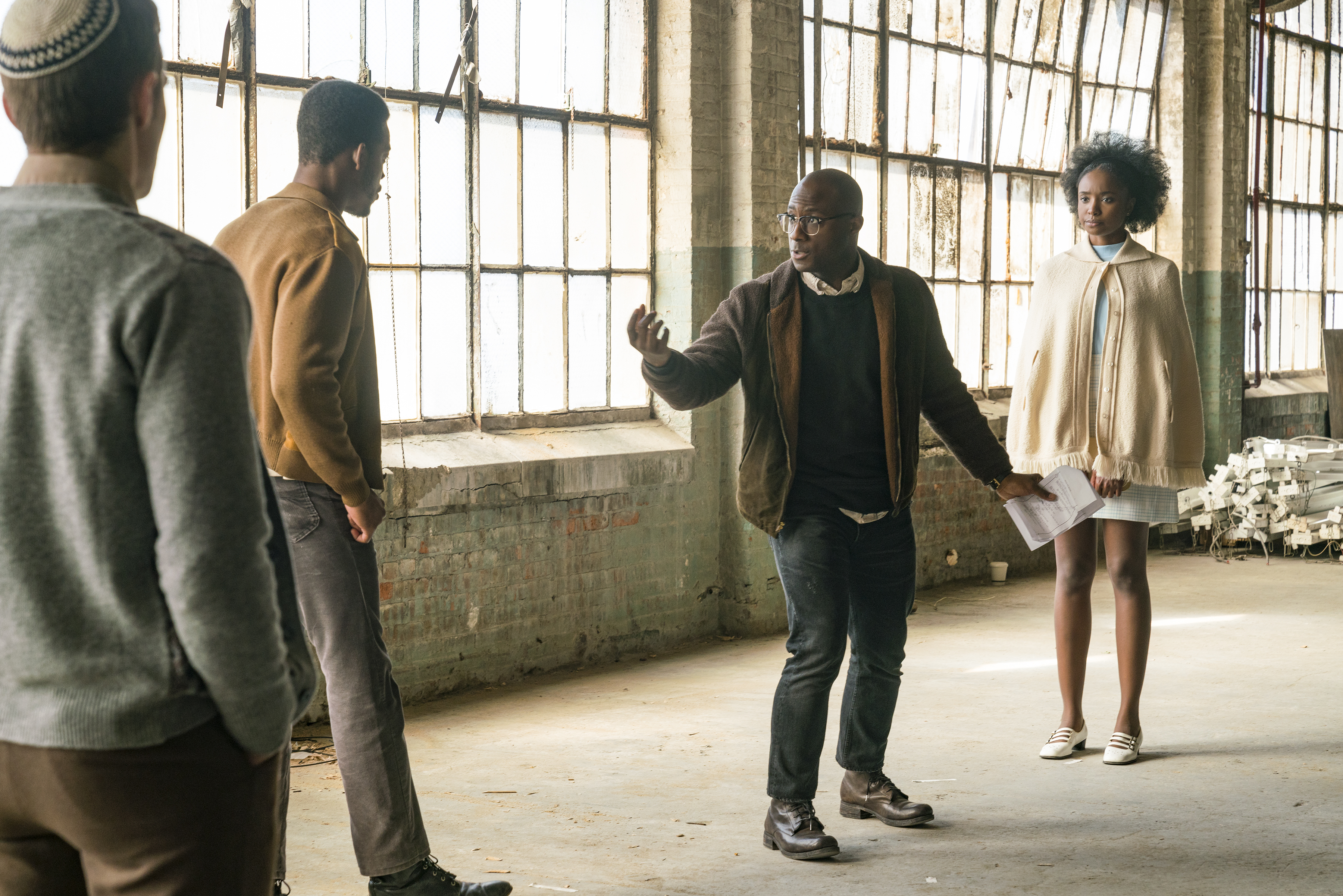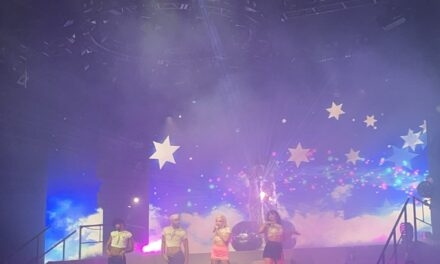
In 2016, underdog Barry Jenkins took the American film scene by storm with his sophomore feature “Moonlight.” The film became the best-reviewed film of the year and won three Academy Awards — including Best Picture. It was the first Best Picture winner with an all-black cast, as well as the lowest-budgeted winner in history. To say “Moonlight” is a cultural watermark would be an understatement. With only one other film under his belt, 2008’s “Medicine for Melancholy,” many film lovers wondered what Jenkins would do next. Two years later, Jenkins re-emerges with “If Beale Street Could Talk,” the first narrative film ever adapted from one of legendary writer James Baldwin’s novels.
The film follows a young Harlem couple, Tish (KiKi Layne) and Fonny (Stephan James), who are expecting their first child. However, Fonny has been framed for the rape of a young Puerto Rican woman by the brutish police officer Bell (Ed Skrein). Tish, her mother Sharon (Regina King) and her father Joseph (Colman Domingo) must race against time to free Fonny from prison, clear his name and return him to his family. “Beale Street,” at once a ravishing love story, thrilling procedural and scathing indictment of the American judicial system, is as essential a film you’ll see this year.
The Emory Wheel discussed filming “Beale Street” with Jenkins in a roundtable interview. This transcript has been edited for clarity and length.
All Urban Central: With the success of “Moonlight,” how did you prepare to direct Baldwin’s novel?
Barry Jenkins: I wrote the script at the same time that I wrote “Moonlight,” so I kinda already knew what I wanted to do next, which took the pressure off, to be honest. It felt like it predated all the hype with the Oscars and the expectations and things like that. I tried to just approach it like I approach anything. Writing the script was the place where the pressure was. At that point, it was just about looking at the scenes, working with the actors and trying to imagine that it wasn’t James Baldwin and that we’re just telling a story in a certain way. Once you come way back and look at it from 30,000 feet, it’s like “whoa, I’m the first person to adapt Baldwin into a feature film.” And that’s when the pressure ratchets up. So I just took that off the table and tried to have a microscopic vision.
The Emory Wheel: To what degree did Baldwin’s writings on film inform your approach?
BJ: His writings on film didn’t affect it at all, because I think if I allowed that, then it would say that film criticism affects the way I make films. Once I admit that, then I’m like, “I’m done.” [laughs] I think they affect my relationship to cinema because I do think reading really good criticism — and Baldwin was a really good critic — can help you understand how all the things you create might affect or interest someone else’s perspective. But, with this piece in particular, to go back to homeboy’s question, I tried to take the weight of Baldwin out of the process and just approach the piece as any other. … As a filmmaker, if you go into a film thinking about the metaphors that are gonna come out of it, then usually, you lose sight of what’s in front of you.
Panther: Were there any difficulties in getting the film made?
BJ: I mean, no … I try to say that the Oscars didn’t affect anything, but when you win an Oscar, a lot of the difficulties go away. The only difficulty, and “difficulty” [is] the wrong word, but when I first sent the script to the James Baldwin estate, it took a process of getting to know them and them getting to know me to unlock the rights, you know. And that wasn’t a thing, like in “Mario Brothers,” where I had to get to the 10th level. The estate just had to become familiar with me. To get into this family, you have to be family.
EW: What motivated you to use so many still photographs in the film?
BJ: A lot of the narration is taken directly from the book, and there’s this great monologue that Baldwin has about the children of Harlem. Even though we’re talking about Tish and Fonny, and the child they may have, I thought it was important to show that these are not the only children who deal with this. [I wanted] to create a scenario where we could see a montage of these children, the actual people from the period. This is where a film tells you what it wants to be. I never imagined that there would be still photos at the end of the film, but I realized that the children you see in the first montage, some of them grow up to be Fonny and Daniel, and I wanted to show them in the last five minutes. It became a mirror, in a certain way.
AUC: Where did you get the inspiration for the close-ups of Tish and Fonny’s faces?
BJ: We did this on “Moonlight,” it was the first time I did it, where the actors look directly into the camera. I think, when you go into a movie theater, you can empathize, but you can’t really feel what the characters are feeling. And so, in these last two films, I’m just always looking for these moments when I demand the audience look at the characters and really feel what they’re feeling. So when I do those shots on set, you play it by ear, you feel when the actors are in this place where the actor and the character have become one. That’s why there’s rarely any dialogue when we do this, because I think if you start doing dialogue, then you’re performing again. We do quite of a few of them and they don’t always work. But when they do work, it kind of just reduces the distance between the audience and the character.
EW: You’ve often talked about the female directors that you take a lot of influence from, so how did that inform your approach to telling a woman’s story?
BJ: It’s not taboo, now, to say that you can always tell when a film isn’t told from the male gaze. You know, this film was interesting because Baldwin was a man, I’m a man, but this movie’s definitely told through the female gaze. So, as a director, I really had to check my ego and listen to the actresses a lot more than I already would. If there were times we disagreed, I would cede the floor to them. There’s a scene in this film, the first time Tish and Fonny make love. They sit down, they take their clothes off, he goes to play a record. That’s all one shot, and there’s a version where the focus stays on her while he’s at the record player. I was like, “This is awesome, we’re just with her.” Then some female director friends of mine watched it and were like, “Yeah, but if you really wanna be the female gaze, you need to objectify him right now.” We had the coverage, so we cut to the shot of him with his shirt off, he takes his pants down, and it was like, “OK, I need to listen,” because there’s a limitation to how I see things.
EW: With the fades to black, you separate the film into three sections. And you’ve done that before, so what draws you to that construction?
BJ: You know, part of it is just that the act changes in this and “Moonlight” are quite severe. With “Moonlight,” we did it visually with the flashing lights, and then you look up and it’s like “Oh s**t, homeboy’s a whole different person.” With this film, the shifts are more subtle, and that’s why we have sound bridges that carry you across. I think when you’re watching a movie, it’s important that the audience needs to be keyed into the shift. It sucks, too, man, there’s a transition that’s perfect [slams hand on desk] if we could go to black one more time, but it would just throw it off too much. But, you know, what are you gonna do? Like I said, it’s the movie we didn’t get to make.
Panther: How important was showing the intimacy between Tish and Fonny?
BJ: It was super important. Because the movie isn’t nonlinear, we framed it in ways that we could show that intimacy throughout. As the film goes on, the situation gets more and more dire, but she keeps going back to their memories, these images of their intimacy, which exists in both the book and the film. That’s the statement, on the power of that intimacy and the power of that love, like this is the darkest moment in her young life. So whenever she allows her mind to not wallow in that moment, she goes off to these places, and because of that, they’re more potent. What Mr. Baldwin was saying in the text was that the lives of black folks in America have always been clouded in despair and suffering. And yet, look at the beautiful things we’ve created. And the love we have for each other.
Read the Wheel’s interview with actors Kiki Layne and Colman Domingo here.






